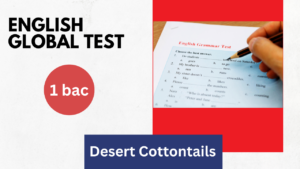Introduction
These everyday objects may seem small and insignificant, but they have played important roles in human history. Quills, rulers, sunglasses, tents, umbrellas, vases, wheels, and xylophones have all been used for centuries and have evolved over time. In this article, “Alphabet Vocabulary (2)”, we will delve into the history and uses of these objects, and explore how they have shaped the world as we know it today. From ancient times to the modern day. These objects have been adapted and used in different ways and continue to play a role in our daily lives.

Quills
Quilts, also known as feather pens, were the primary writing instrument in Europe from the 6th to the 18th century. They were made from the feathers of large birds such as geese or swans, and were used to write on parchment or paper. Quills were sharpened to a point and dipped in ink before writing. They were popular because they were inexpensive and easy to find, and they could create fine lines and details.
Rulers
Rulers, also known as straightedges, are used to measure the length and draw straight lines. They have been in use since ancient times and have been made from materials such as wood, metal, and plastic. Rulers can be found in a variety of sizes and can be used for various purposes such as drawing, construction, and engineering.
Sunglasses
Sunglasses are a form of protective eyewear designed to reduce the amount of light entering the eye. They have been used for centuries to protect the eyes from the sun’s harmful ultraviolet (UV) rays. Sunglasses have evolved over time, from the earliest versions made from smoky quartz and flat panels of smoky crystal to modern sunglasses made from plastic and other materials. Today, sunglasses are not only used to protect the eyes but also as a fashion accessory.
Tents
Tents are temporary shelters made of fabric or other materials that are supported by poles. They have been used for centuries by nomadic people, hunters, and campers. The earliest tents were made from animal skins, but today they are made from materials such as canvas, nylon, and polyester. Tents come in a variety of shapes and sizes, from small one-person tents to large family tents.
Umbrellas
Umbrellas are portable shelters that consist of a canopy supported by a central pole. They have been used for centuries to protect people from the sun and rain. The first umbrellas were made from materials such as leaves, grass, and animal skins. Today, umbrellas are made from materials such as nylon and polyester, and they come in a variety of styles and colors.
Vases
Vases are decorative containers used to hold flowers and other plants. They have been used for thousands of years and have been made from materials such as clay, glass, and metal. Vases come in a variety of shapes, sizes, and styles, from ancient Greek urns to modern glass vases.
Wheels
Wheels are circular devices that rotate around an axle. They have been used for thousands of years to make transportation and machinery more efficient. The earliest wheels were made from materials such as wood and stone, but today they are made from materials such as rubber and metal. Wheels come in a variety of sizes and are used for various purposes such as transportation, machinery, and even sports equipment.
Xylophones
are musical instruments that consist of a series of wooden bars that are struck with mallets to produce sound. They have been used for centuries in Africa and Asia, and have also been used in Western classical music. The bars of a xylophone are arranged in a specific order to produce different notes, and the instrument can be played either by striking the bars with the mallets or by striking them with the hands.
Conclusion
To sum up, Quills, rulers, sunglasses, tents, umbrellas, vases, wheels, and xylophones are all everyday objects that have played important roles in human history. They have evolved over time and have been used for various purposes. They have been adapted and used in different ways and will continue to play a role in our daily lives.






